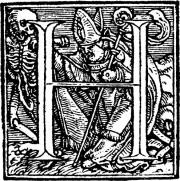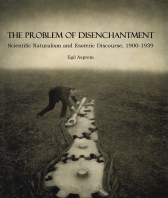Next up in what is quickly becoming a series on heterodox Christologies: Jesus was really a shaman. This claim was found in Norwegian media last week – more precisely in the Sami branch of the state channel NRK’s online news site. The (neo)shamanic healer Eirik Myrhaug went on record saying that he saw Jesus as “a great shaman”: “after all he was 40 days and 40 nights in the desert, and that’s a typical shamanic seance”.
This news item caught my attention because I have recently been working on an article on neoshamanism – or rather, on the genealogy and mythology of shamanism, as created by a motley crew of explorers, romantics, nationalists, psychedlelic gurus, anthropologists and historians since the 1600s – before it finally became a new religious movement in the 1960s. Myrhaug himself is of Sami descent, but his shamanic techniques appear to be derived from the anthropologist Michael Harner’s “core shamanism” – as is the case with the entire “revival” of shamanism in a Sami context. What struck me the most, however, was that Myrhaug’s shamanic interpretation of Jesus – which was heavily and predictably criticised by a Lutheran minister in the same news article – has a long history. “Jesus was a shaman” is in fact a stock element in the continuously expanding “universal shamanism” franchise.
We find certain contemporary anthropologists making the connection, such as Pieter Craffert in The Life of a Galilean Shaman (2008). But the most intriguing version of the shamanic Christ (and, frankly, here I go by what we might call “the entertainment criterion of relevance”) is one that developed as a whole school of its own among Siberian academics in the late 19th and early 20th centuries.
As Andrew Znamenski tells in his highly fascinating Beauty of the Primitive (2007) – to which I am largely indebted on this topic – the expansion of shamanism to explain the central religious formations of the middle east developed among Siberian regionalists between the 1870s and the 1920s. The first of these imaginative scholars was the folklorist Grigorii N. Potanin (1835-1920), working at Tomsk University in south-western Siberia. His project was, quite clearly, to elevate the cultural status of his region, and to show that it had a more central place in world history than was commonly admitted. “Shamanism” became the key, and Potanin was not modest: his later ethnographic work was dedicated to demonstrating that the entire Judeo-Christian tradition in fact had originated in Siberia.
To argue his point he used philological similarities for all they were worth and more (a standard technique, of course, which we also saw with John Allegro and his mushroom Christology), while mining the recorded mythologies and legends for other parallels. Of course, he found them, and thus Potanin’s “Oriental hypothesis” (as he called it) was born. It was built on the basis of similar theories that had been promoted by the classicists and romantics for a couple of generations already – including by such people as Herder and Schlegel. But while the scholars in Europe had generally tried to prove a connection between their own culture and ancient India and Tibet, Potanin turned it all around and argued that his own region was the source of ancient wisdom.
In a book entitled Saga of Solomon Potanin used various “parallels” to argue that all the basic elements of the story of King Solomon were actually derived from Turkic and Mongolian mythology. For example, he noted that the very name Solomon was most likely a corruption of the Turkic-Mongol name for Venus, “Tsolomon”.
In a lecture before other scholars in St. Petersburg in 1911, Potanin took on “the Christ legend” in a similar manner. Znamenski quotes from the lecture:
“We clearly see that it is the central Asian shamanic legend that lies at the foundation of the legend about Christ, and that the image of Christ himself was shaped according to the image that had existed many centuries earlier in inner Asia.” (p. 46)
Unfortunately for Potanin he was not very well received in this capital of learning, confirming no doubt certain negative stereotypes of the eccentric and isolated rural expert rather than helping to elevate the view of his region.
Nevertheless his theory remained popular in Siberia, and the following generation of scholars at Tomsk would take it up and develop a veritable “Tomsk school” of shamanism studies. Gavriil Ksenofontov is an interesting example, and represents a slightly more sophisticated version of the theory. Unfortunately, his career was cut short not because of extravagant eccentricities, but by a great historic tragedy: he was executed in the stalinist purges in 1938, for his association with regionalist groups.
Significantly, Ksenofontov was not so narrowly focused on “genetic” theories of mythic elements, spreading from one region to another. Instead, he focused also on the structural patterns, of what could be inferred about the form of religious practices. Thus, for example, he noted that the Gospels describe Jesus as a folk healer, who casts out demons from the sick, and even resurrected the dead. Such miracles are found abundantly in the legends concerning shamans, Ksenofontov noted – no doubt rightly so. He even found Siberian legends where shamans walk on water, feed the starving, and manipulate the weather. Jesus was an honoured guest at weddings and funerals, just as the local shamans were. Thus, in stead of arguing that the Jesus figure was a “myth” that had been borrowed from inner Asia, Ksenofontov portrayed Christianity as developing from a very specific case of a “shamanic practitioner”, a kind of religious practice that is supposedly universally found and known under the name of “shamanism”. Only by being “infected” with various theological systems was the original story of “Jesus the shaman” turned into a story of “the Son of God”.
While this is certainly not the least plausible way in which an argument for Jesus being a “shaman” could be made – incidentally, it appears to be of the same type as the one presented by our contemporary Sami neoshaman – it obviously does still conflict with the better knowledge of biblical scholarship. Not to say that it stretches the meaning of “shamanism” as an analytical tool much beyond what is even remotely defensible (I don’t think it is a very helpful category in the first place – too elastic, and also much too vested).
To seal the case, however, Ksenofontov adds a few final “linguistic similarities” of his own: the very name of Christ did not in fact originate from the Greek kristos, he claimed. Instead of this word, translated as “the anointed one”, the real word should be khrestes – “the seer” or “the soothsayer”. The very title of Ksenofontov’s book of heterodox christology was called Khrestes: Shamanism and Christianity (1929). The original Jesus of the Gospels, then, would have been a krestes, not a kristos – a magician rather than a divine saviour. In short, a shaman.
Incidentally, the shamanic theory of Jesus thus has quite a bit in common with a much older heretical notion: that Jesus was not divine, but rather an unusually skilled magician. That was one of the heretical opinions for which Giordano Bruno was burned at the stake in Rome in 1600.
![]()
This blog post by Egil Asprem was first published on Heterodoxology. It is licensed under a Creative Commons Attribution-ShareAlike 3.0 Unported License.








I´m having a hard time keeping up with all of this. Still waiting for the Allegro book to hit my pigeon hole. But interesting post nonetheless!
I realise there’s been a rush of postings after I finished my dissertation. Much material has clogged up! Most of it I haven’t gotten back to yet though, so stay put. Butt he frequency of posts per week might be reduced again soon.
[…] Jesus was a … shaman (heterodox Christologies II) (heterodoxology.com) […]
Interesting that Ksenofontov states Christ originated from Khrestes instead of kristos. It seems like the case could be made for a compelling argument, though I have heard Christ came from KRST in ancient Egypt too.